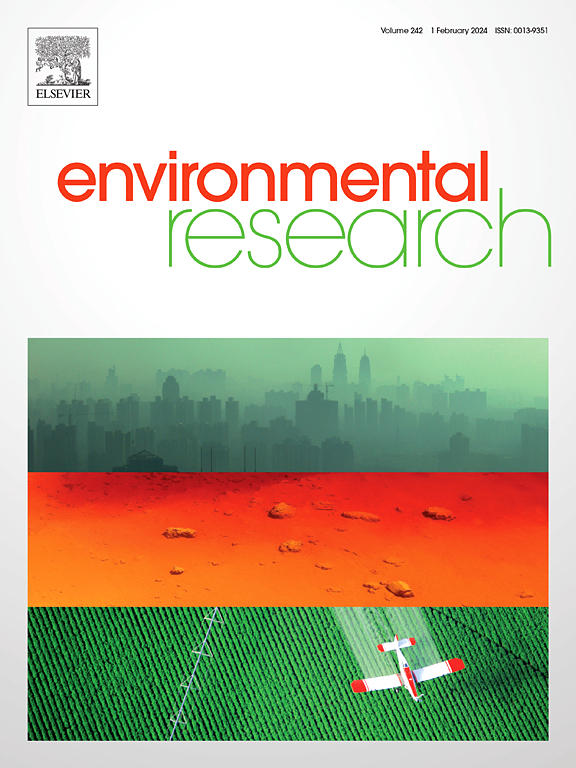抗生素抗性组与温室气体功能微生物在不同栖息地的动态关系
IF 7.7
2区 环境科学与生态学
Q1 ENVIRONMENTAL SCIENCES
引用次数: 0
摘要
具有不同栖息地的水库生态系统形成了抗生素抗性基因(ARGs)和温室气体(GHG)排放汇聚的关键界面。尽管arg在不同栖息地的分布和生态影响仍然非常未知。在剖析抗生素抗性组和温室气体功能微生物之间的相互联系方面存在一个关键的差距。因此,我们旨在研究三峡水库不同生境中抗生素抗性组与温室气体功能微生物之间的关系,包括水、沉积物和河岸顶底土。我们对四种栖息地的ARG丰度和多样性进行了全面评估。ARG的显著差异,河岸带的水丰度是ARG的两倍多。ARGs的水平基因转移在水中更为频繁,表明其在水生ARG传播中起着关键作用。温室气体功能微生物表现出生境特异性的组成和多样性,关键属如奈瑟菌属和偶氮菌属在河岸底土中,与其他生境中的链霉菌属形成鲜明对比。抗生素抗性体与温室气体功能微生物在不同生境中的动态关系从协同到竞争,反映了抗生素抗性体可以影响生态功能的稳定性。这项研究强调了在全球变化背景下考虑抵抗体的重要性,促进了我们对这些关键生态系统的环境管理和保护策略的理解。本文章由计算机程序翻译,如有差异,请以英文原文为准。

Dynamic relationships of antibiotic resistomes and greenhouse gas-functioning microbes across diverse habitats
Reservoir ecosystems with diverse habitats form critical interfaces where antibiotic resistance genes (ARGs) and greenhouse gas (GHG) emissions converge. Despite their distribution and ecological implications of ARGs across diverse habitats remain greatly unknown. There is a critical gap in dissecting the interlinkages between antibiotic resistomes and GHG-functioning microbes. Thus, we aimed to investigate the relationship between antibiotic resistomes and GHG-functioning microbes in various habitats of the Three Gorges reservoir, encompassing water, sediment, and riparian top- and sub-soil. We provide a comprehensive assessment of ARG abundance and diversity across four habitats. Significant differences in ARG, with riparian zones exhibiting more than twice the ARG abundance of water. Horizontal gene transfer of ARGs was more frequent in water, suggesting a pivotal role in aquatic ARG dissemination. The GHG-functioning microbes displayed habitat-specific composition and diversity, with key genera like Neisseria and Azoarcus in riparian subsoil, contrasting with Streptomyces in other habitats. The dynamic relationship of antibiotic resistomes and GHG-functioning microbes ranges from synergistic to competitive in varied habitats, reflecting antibiotic resistomes can influence ecological function stability. This study emphasizes the importance of considering resistomes in the context of global change, advancing our understanding of environmental management and conservation strategies in these critical ecosystems.
求助全文
通过发布文献求助,成功后即可免费获取论文全文。
去求助
来源期刊

Environmental Research
环境科学-公共卫生、环境卫生与职业卫生
CiteScore
12.60
自引率
8.40%
发文量
2480
审稿时长
4.7 months
期刊介绍:
The Environmental Research journal presents a broad range of interdisciplinary research, focused on addressing worldwide environmental concerns and featuring innovative findings. Our publication strives to explore relevant anthropogenic issues across various environmental sectors, showcasing practical applications in real-life settings.
 求助内容:
求助内容: 应助结果提醒方式:
应助结果提醒方式:


